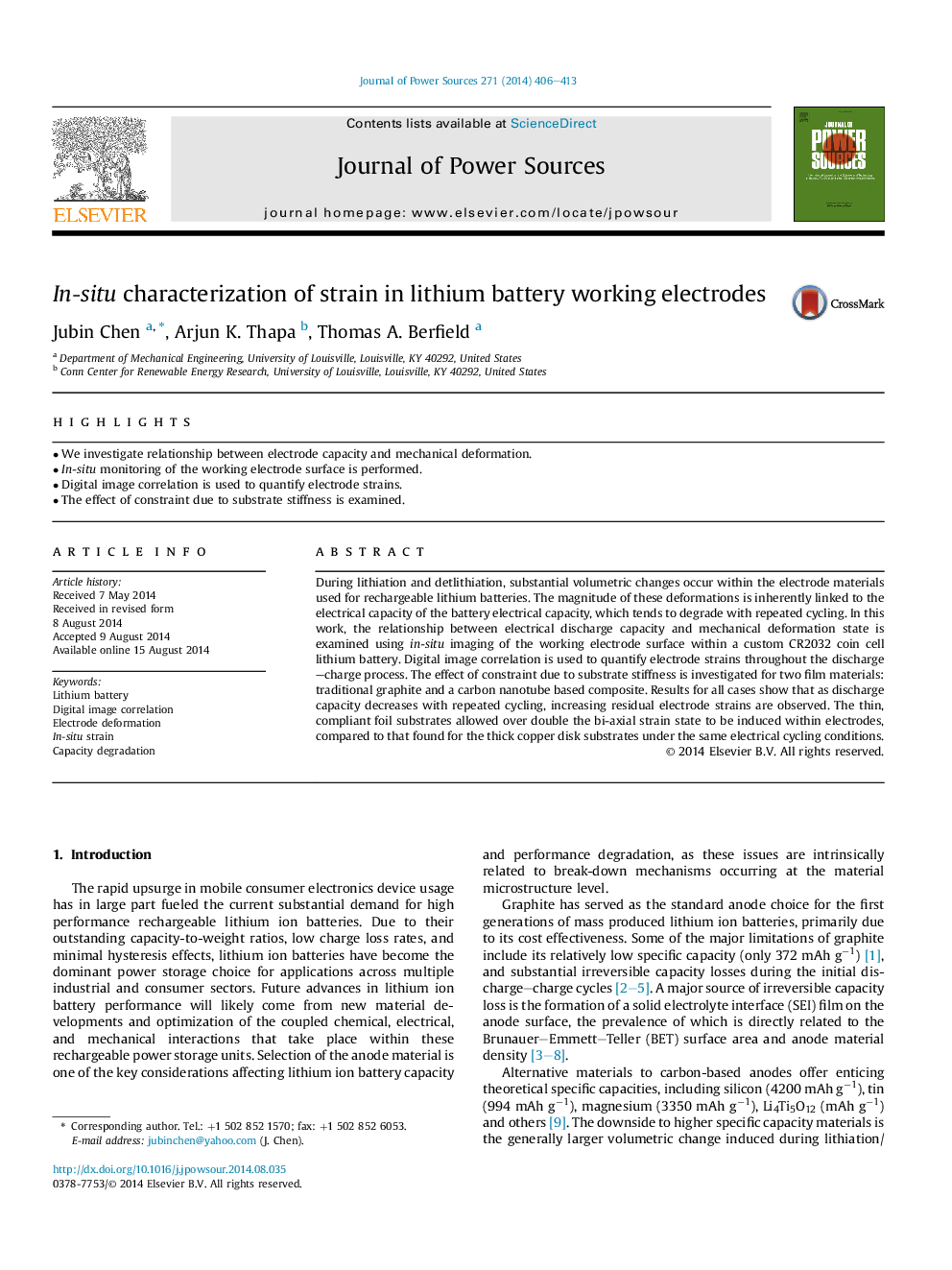| Article ID | Journal | Published Year | Pages | File Type |
|---|---|---|---|---|
| 7735953 | Journal of Power Sources | 2014 | 8 Pages |
Abstract
During lithiation and detlithiation, substantial volumetric changes occur within the electrode materials used for rechargeable lithium batteries. The magnitude of these deformations is inherently linked to the electrical capacity of the battery electrical capacity, which tends to degrade with repeated cycling. In this work, the relationship between electrical discharge capacity and mechanical deformation state is examined using in-situ imaging of the working electrode surface within a custom CR2032 coin cell lithium battery. Digital image correlation is used to quantify electrode strains throughout the discharge-charge process. The effect of constraint due to substrate stiffness is investigated for two film materials: traditional graphite and a carbon nanotube based composite. Results for all cases show that as discharge capacity decreases with repeated cycling, increasing residual electrode strains are observed. The thin, compliant foil substrates allowed over double the bi-axial strain state to be induced within electrodes, compared to that found for the thick copper disk substrates under the same electrical cycling conditions.
Related Topics
Physical Sciences and Engineering
Chemistry
Electrochemistry
Authors
Jubin Chen, Arjun K. Thapa, Thomas A. Berfield,
